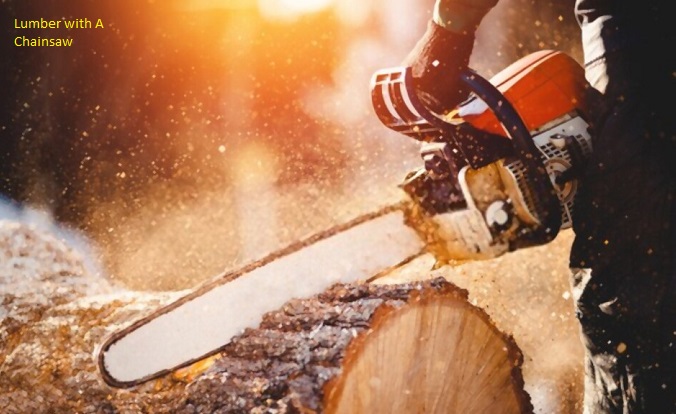When it comes to DIY projects or professional metalworking tasks, having the right tools can make all the difference. A jigsaw is a versatile and commonly used power tool for cutting various materials like wood, plastic, and even metal. But the question remains, can you cut metal with a jigsaw effectively and safely?
In this comprehensive article, we will explore the capabilities of a jigsaw when it comes to cutting metal, the best practices, safety measures, and tips to achieve precise cuts. So, whether you’re a seasoned metalworker or a DIY enthusiast, let’s dive in and discover the world of metal cutting with a jigsaw!
Understanding the Jigsaw and Its Capabilities
A jigsaw is a handheld power tool featuring a reciprocating blade that moves up and down, enabling it to cut through a wide range of materials. Its primary use is for cutting curves and intricate shapes in wood, but with the right blade and techniques, it can also handle metal cutting tasks. However, it’s crucial to acknowledge that not all jigsaws are suitable for metal cutting. To cut metal effectively, you’ll need to choose the right jigsaw and follow specific guidelines.
Choosing the Right Jigsaw for Metal Cutting
When selecting a jigsaw for cutting metal, consider the following factors:
- Power Rating: Opt for a jigsaw with higher power, typically measured in watts or amps. The more power it has, the better it can handle tough metal cutting tasks.
- Variable Speed Settings: Look for a jigsaw with adjustable speed settings. This feature allows you to control the cutting speed, ensuring better precision and reducing the risk of blade breakage.
- Orbital Action: Jigsaws with orbital action have a slightly circular motion, which helps in faster and smoother metal cuts.
- Sturdy Base Plate: Ensure the jigsaw has a robust base plate or shoe to provide stability during metal cutting.
- Blade Compatibility: Check if the jigsaw is compatible with metal-cutting blades. T-shank blades are commonly used for metal cutting.
The Right Blade for Metal Cutting
The blade you use plays a vital role in achieving clean and accurate metal cuts. Different metals require different types of blades. Here are some popular blade options for metal cutting:
- High-Speed Steel (HSS) Blades: Ideal for cutting soft metals like aluminum and brass.
- Bi-Metal Blades: Suitable for cutting harder metals like steel and stainless steel.
- Carbide Grit Blades: Designed for cutting materials with embedded nails or tough metal surfaces.
Safety Precautions for Metal Cutting
Working with metal can be hazardous, so taking proper safety precautions is essential. Here are some crucial safety measures to follow:
- Wear Protective Gear: Always wear safety goggles, ear protection, and work gloves to safeguard against metal chips and noise.
- Secure the Metal: Use clamps or vices to hold the metal firmly in place, preventing it from moving during cutting.
- Work in a Well-Ventilated Area: Metal cutting produces dust and fumes. Ensure you work in a properly ventilated space or wear a respirator.
- Avoid Overheating: Metal cutting can generate a lot of heat. Pause intermittently to prevent overheating the blade and the metal.
- Unplug the Jigsaw: Before changing the blade or making adjustments, always unplug the jigsaw to avoid accidental starts.
Tips and Techniques for Precise Metal Cuts
Achieving precise and clean metal cuts with a jigsaw requires skill and practice. Follow these tips and techniques to improve your metal cutting prowess:
1. Mark the Cut Line Clearly
Use a permanent marker or scribe to mark the cut line on the metal surface. A clear and visible line will guide you during the cutting process and minimize errors.
2. Start with a Slow Speed
When beginning the cut, set the jigsaw to a slow speed. Gradually increase the speed as you progress into the cut. This helps prevent the blade from wandering and ensures smoother cuts.
3. Support the Metal
For large metal sheets or panels, provide additional support with sawhorses or workbenches to avoid bending or vibrating during cutting.
4. Apply Minimal Pressure
Let the jigsaw’s blade do the work. Applying excessive pressure can lead to blade bending or breaking and may produce rough cuts.
5. Cool the Blade
Metal cutting generates heat, so occasionally lift the jigsaw from the metal to allow the blade to cool down. This helps maintain blade sharpness and prolong its life.
6. Use Cutting Fluids (For Thick Metals)
When cutting thick metals, applying cutting fluids or lubricants can enhance cutting efficiency and prevent overheating.
Common Mistakes to Avoid
Even with the right tools and techniques, mistakes can happen. Being aware of common errors can help you avoid them:
1. Using the Wrong Blade
Using a wood-cutting blade for metal cutting will lead to unsatisfactory results and possible blade damage. Always use the appropriate metal-cutting blade.
2. Rushing the Cut
Take your time and be patient during the cut. Rushing may cause the blade to wander, resulting in uneven cuts.
3. Neglecting Safety Measures
Safety should be your top priority. Always wear protective gear and follow safety guidelines to prevent accidents.
4. Forgetting to Secure the Metal
Failing to secure the metal properly can lead to dangerous situations. Ensure the metal is firmly held in place before starting the cut.
5. Overlooking Blade Maintenance
A dull blade can hinder cutting performance. Regularly inspect and replace blades as needed for optimal results.
FAQs
Q1: Can I use a jigsaw to cut thick steel sheets?
Yes, you can cut thick steel sheets with a jigsaw, but you’ll need the right blade and a powerful jigsaw with adjustable speed settings. Use a bi-metal blade and work at a slow and steady pace.
Q2: Can a cordless jigsaw handle metal cutting?
Yes, cordless jigsaws can cut metal effectively, but ensure you use a high-quality battery with sufficient power and charge. Corded jigsaws often provide more consistent power for longer cutting sessions.
Q3: What is the average lifespan of a metal-cutting jigsaw blade?
The lifespan of a metal-cutting jigsaw blade depends on various factors, including the type of metal being cut, the quality of the blade, and cutting techniques. On average, a blade may last for several metal cutting projects before needing replacement.
Q4: Can I cut curves in metal with a jigsaw?
Yes, a jigsaw is excellent for cutting curves and intricate shapes in metal. Use a jigsaw with orbital action and a fine-toothed blade for the best results.
Q5: Is it necessary to wear a respirator when cutting metal?
Wearing a respirator is recommended, especially when cutting metals like steel that produce harmful dust and fumes. A respirator protects your lungs from inhaling these particles.
Conclusion
A jigsaw can indeed cut metal, but it requires the right tool, the right blade, and proper techniques. Whether you’re working on a DIY metal project or a professional metalworking task, the versatility of a jigsaw can be a valuable asset.
Remember to prioritize safety, choose the appropriate blade, and follow the tips and techniques mentioned in this article for precise and efficient metal cutting with a jigsaw. Now, you can confidently tackle metal cutting projects and create stunning works of art with ease!


